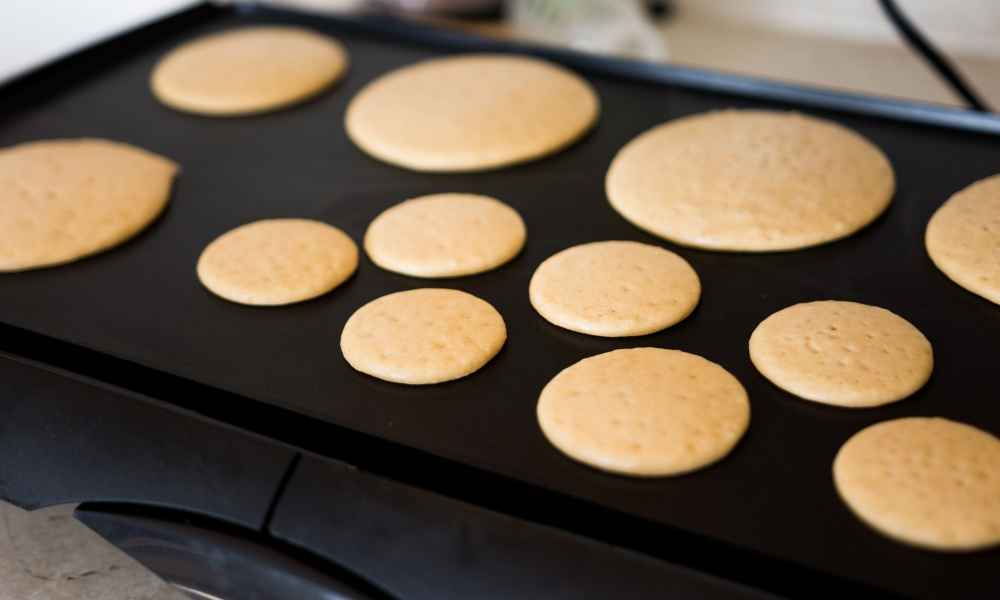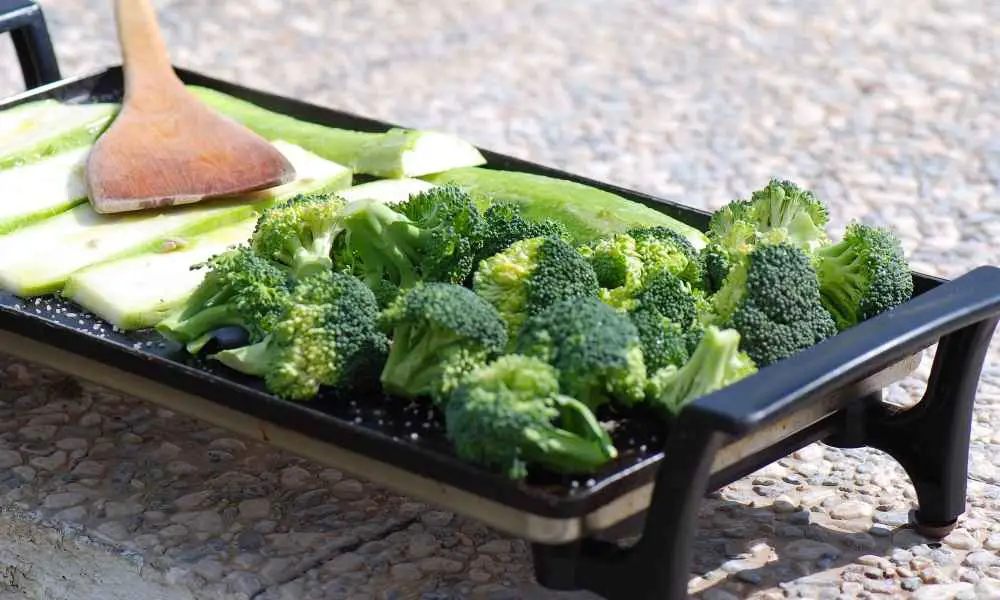Seasoning a griddle is an essential step that every griddle owner should take to ensure their griddle lasts longer and performs better. A well-seasoned griddle will provide a non-stick surface that is easy to clean and prevents food from sticking to the griddle. It also helps to prevent rust and corrosion, which can affect the quality of the food and the lifespan of the griddle.
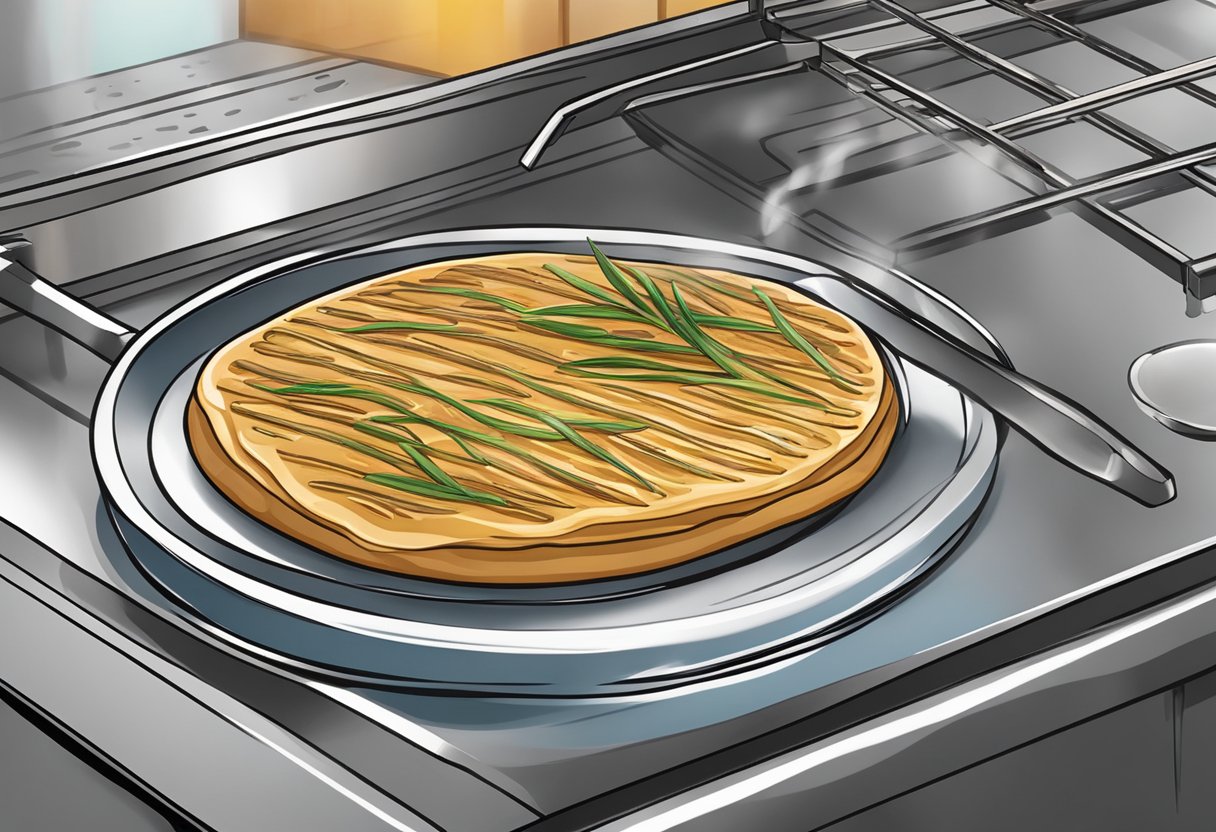
To season a griddle, you will need to clean it thoroughly to remove any dirt, grease, or debris. After cleaning, you will apply a layer of oil to the griddle and heat it up to a high temperature. This process will create a protective layer on the griddle that will prevent food from sticking and also protect the griddle from rust and corrosion. There are different methods and oils that you can use to season your griddle, and we will explore them in detail in this article.
Understanding Your Griddle
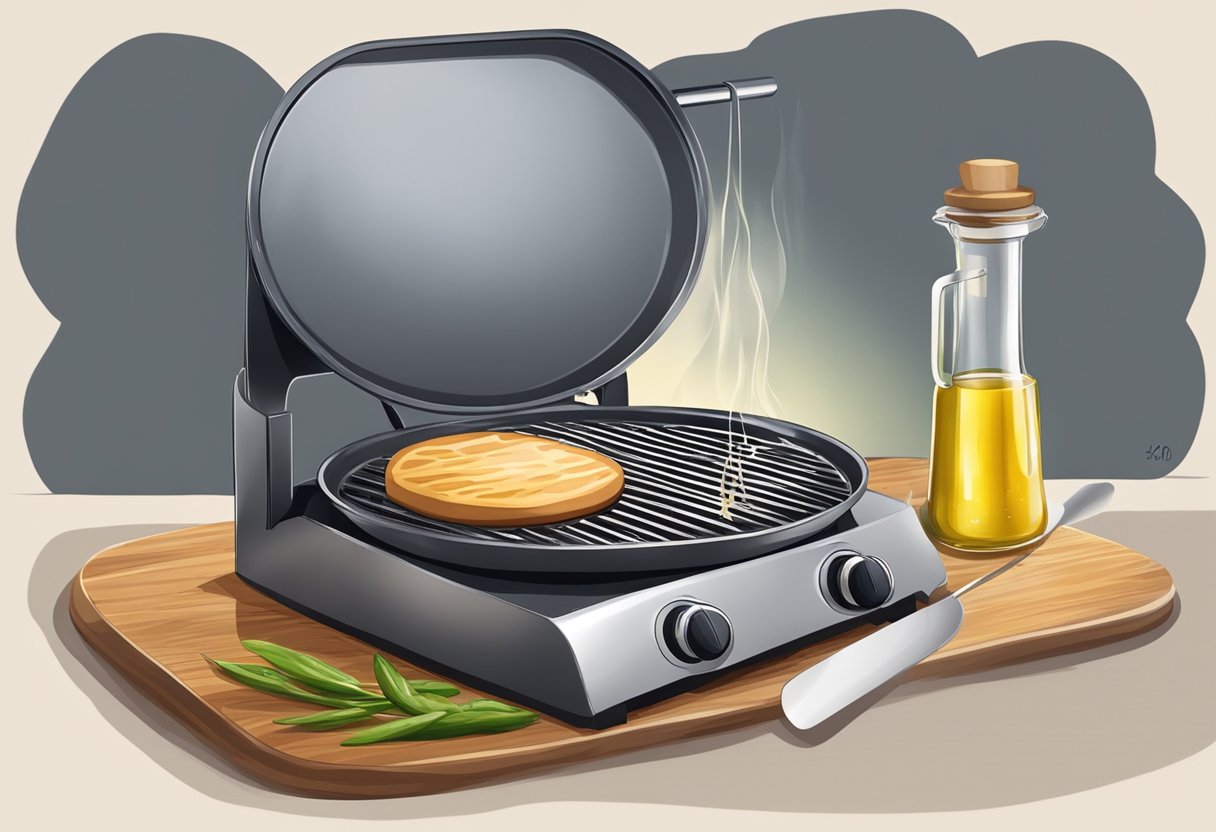
When it comes to griddle cooking, understanding your griddle is essential. Knowing the type and material of your griddle can help you determine the best way to season it and how to care for it properly. In this section, we’ll discuss the different types of griddles and the materials they’re made of.
Types of Griddles
There are two main types of griddles: electric and gas. Electric griddles are powered by electricity and are typically used in indoor settings, such as kitchens. Gas griddles are powered by propane or natural gas and are typically used in outdoor settings, such as patios or decks.
Electric griddles are easy to use and clean, and they heat up quickly and evenly. They’re also great for cooking a variety of foods, from pancakes to burgers to vegetables. Gas griddles, on the other hand, are more powerful and can reach higher temperatures, making them ideal for cooking larger quantities of food or for outdoor events.
Griddle Material
Griddles can be made from a variety of materials, including cast iron, stainless steel, and aluminum. Cast iron griddles are popular because they retain heat well and distribute it evenly, making them ideal for searing and frying. They also develop a natural non-stick surface over time, which makes them easy to clean and maintain.
Stainless steel griddles are durable and easy to clean, but they don’t retain heat as well as cast iron. They’re popular in commercial kitchens because they’re resistant to rust and corrosion and can handle high temperatures.
Aluminum griddles are lightweight and heat up quickly, but they don’t retain heat as well as cast iron or stainless steel. They’re also prone to scratching and denting, so they require more care and maintenance.
Understanding the type and material of your griddle can help you determine the best way to season it and care for it properly. Whether you have a cast iron, stainless steel, or aluminum griddle, proper seasoning and maintenance will help ensure that your griddle lasts for years to come.
Preparation Before Seasoning
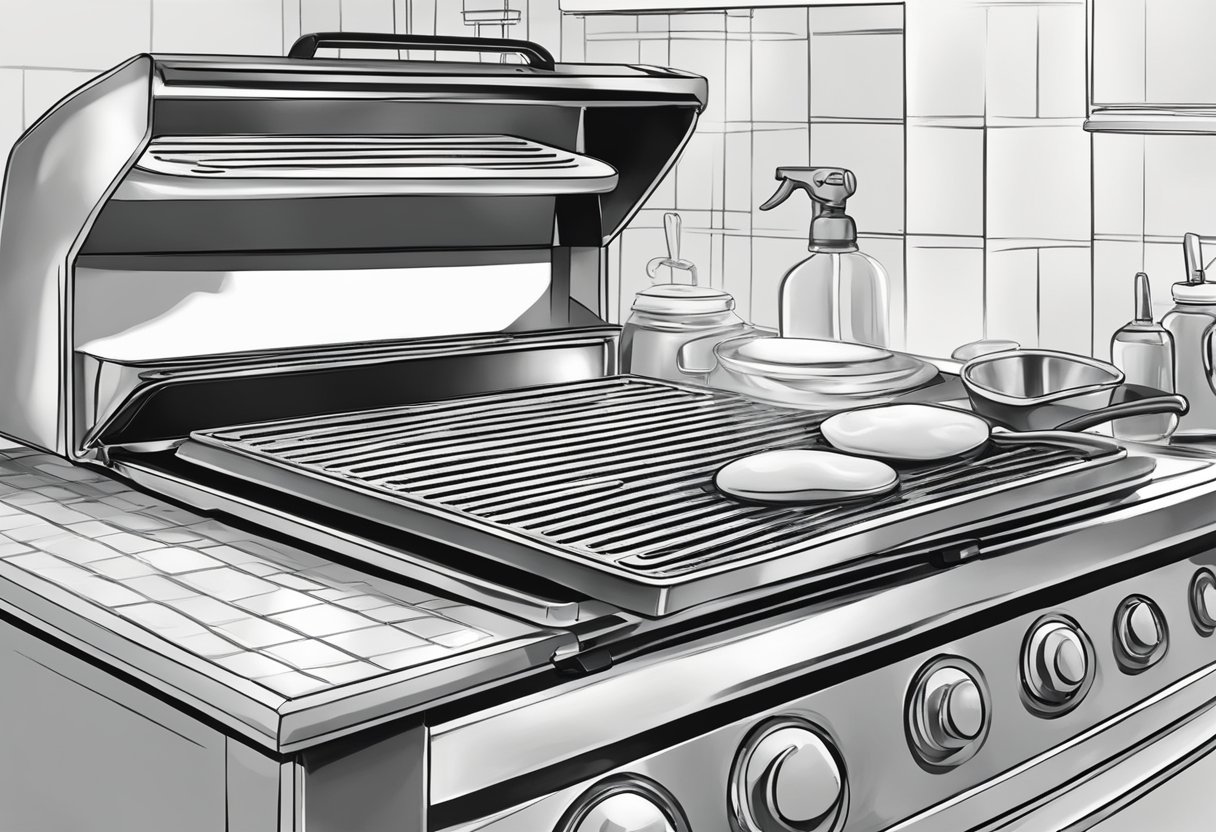
Before seasoning your griddle, it is important to properly prepare it. This involves cleaning and drying the griddle. Follow the steps below to prepare your griddle for seasoning.
Cleaning the Griddle
To ensure that your griddle is clean before seasoning, follow these steps:
- Fill a small bucket with water and add a mild dish soap.
- Use a washcloth to scrub the griddle surface with the soapy water. Be sure to remove any dust or debris from manufacturing and shipping.
- Rinse the griddle surface with clean water.
- Dry the griddle completely using a clean towel.
Drying the Griddle
After cleaning the griddle, it is important to dry it completely before seasoning. Follow these steps to dry your griddle:
- Use a clean towel to remove any excess water from the griddle surface.
- Allow the griddle to air-dry completely before seasoning.
By properly cleaning and drying your griddle, you will ensure that it is ready to be seasoned. This will help to create a non-stick surface and protect your griddle from rust and other damage.
Choosing the Right Seasoning Oil
https://www.youtube.com/watch?v=ogumeVM5M4k&embed=true
When it comes to seasoning your griddle, choosing the right oil is crucial. Not all oils are created equal, and some are better suited for seasoning than others. In this section, we’ll discuss the different types of oils you can use for seasoning your griddle and the benefits of each oil.
Types of Oils
There are several types of oils you can use for seasoning your griddle, each with its own unique properties. Here are some of the most popular options:
-
Avocado oil: This oil has a high smoke point, making it ideal for high-heat cooking. It also has a neutral flavor, so it won’t affect the taste of your food.
-
Grapeseed oil: Another oil with a high smoke point, grapeseed oil is also rich in antioxidants and vitamin E.
-
Canola oil: This oil has a mild flavor and a high smoke point, making it a popular choice for seasoning griddles.
-
Coconut oil: This oil has a unique flavor and aroma that can add a tropical twist to your food. It also has a high smoke point, making it suitable for high-heat cooking.
-
Peanut oil: This oil has a nutty flavor and a high smoke point, making it a great choice for seasoning griddles.
-
Olive oil: While not ideal for high-heat cooking, olive oil can still be used for seasoning griddles. It has a distinctive flavor that can add depth to your food.
-
Sunflower oil: This oil has a high smoke point and a neutral flavor, making it a versatile choice for seasoning griddles.
Benefits of Each Oil
Each oil has its own unique benefits when it comes to seasoning your griddle. Here are some of the advantages of each oil:
-
Avocado oil: High smoke point, neutral flavor.
-
Grapeseed oil: High smoke point, rich in antioxidants and vitamin E.
-
Canola oil: Mild flavor, high smoke point.
-
Coconut oil: Unique flavor and aroma, high smoke point.
-
Peanut oil: Nutty flavor, high smoke point.
-
Olive oil: Distinctive flavor.
-
Sunflower oil: High smoke point, neutral flavor.
In conclusion, choosing the right oil for seasoning your griddle is important for achieving the best results. Consider the smoke point and flavor of each oil when making your choice.
The Seasoning Process
https://www.youtube.com/watch?v=fc0PeMztDm4&embed=true
To ensure your griddle lasts a lifetime and cooks your food to perfection, you need to season it properly. The seasoning process involves coating the griddle with oil, heating it up, and cooling it down. Here’s a step-by-step guide on how to season your griddle:
Applying the Oil
Before seasoning, make sure your griddle is clean and dry. Choose an oil with a high smoke point, such as vegetable oil, canola oil, or flaxseed oil. Apply a thin layer of oil to the griddle’s surface using a paper towel or brush. Make sure the oil covers the entire surface, including the sides and corners.
Heating the Griddle
Once the oil is applied, turn on the griddle to high heat. Let it heat up for 15-20 minutes or until the oil starts to smoke. The heat helps the oil penetrate the metal and creates a non-stick surface. During this process, you may notice some smoke and a burning smell. This is normal and indicates that the oil is bonding with the metal.
Cooling Down
After heating, turn off the griddle and let it cool down completely. Do not remove the oil or clean the surface. Cooling down allows the oil to solidify and create a protective layer on the metal. Once the griddle is cool, you can wipe off any excess oil with a paper towel.
Repeat the seasoning process 2-3 times before using your griddle for cooking. After each use, clean the surface with a scraper and paper towel. Avoid using soap or abrasive cleaners, as they can damage the seasoning. With proper care and maintenance, your griddle will provide you with delicious meals for years to come.
Maintaining Your Griddle
https://www.youtube.com/watch?v=iuDLDuoGso4&embed=true
To keep your griddle in top condition and ensure it lasts for years to come, regular cleaning and re-seasoning are crucial. Here are some tips to help you maintain your griddle.
Regular Cleaning
Cleaning your griddle after each use will prevent food particles and grease from building up and damaging the surface. Here are some steps to follow:
- Allow the griddle to cool down completely.
- Using a scraper or spatula, remove any food particles or debris from the surface.
- Wipe the surface with a paper towel or cloth to remove any remaining debris.
- If necessary, use a non-abrasive cleaner and warm water to clean the surface.
- Rinse with warm water and dry with a clean cloth or paper towel.
Re-Seasoning
Over time, the seasoning on your griddle may wear off, which can cause food to stick to the surface. Here’s how to re-season your griddle:
- Clean the surface of the griddle as described above.
- Apply a thin layer of oil to the surface of the griddle. You can use any oil with a high smoke point, such as vegetable oil or flaxseed oil.
- Heat the griddle on high heat until the oil begins to smoke.
- Turn off the heat and allow the griddle to cool down completely.
- Wipe off any excess oil with a paper towel or cloth.
By following these simple steps, you can keep your griddle in top condition and ensure it lasts for years to come.
Safety Measures During Seasoning
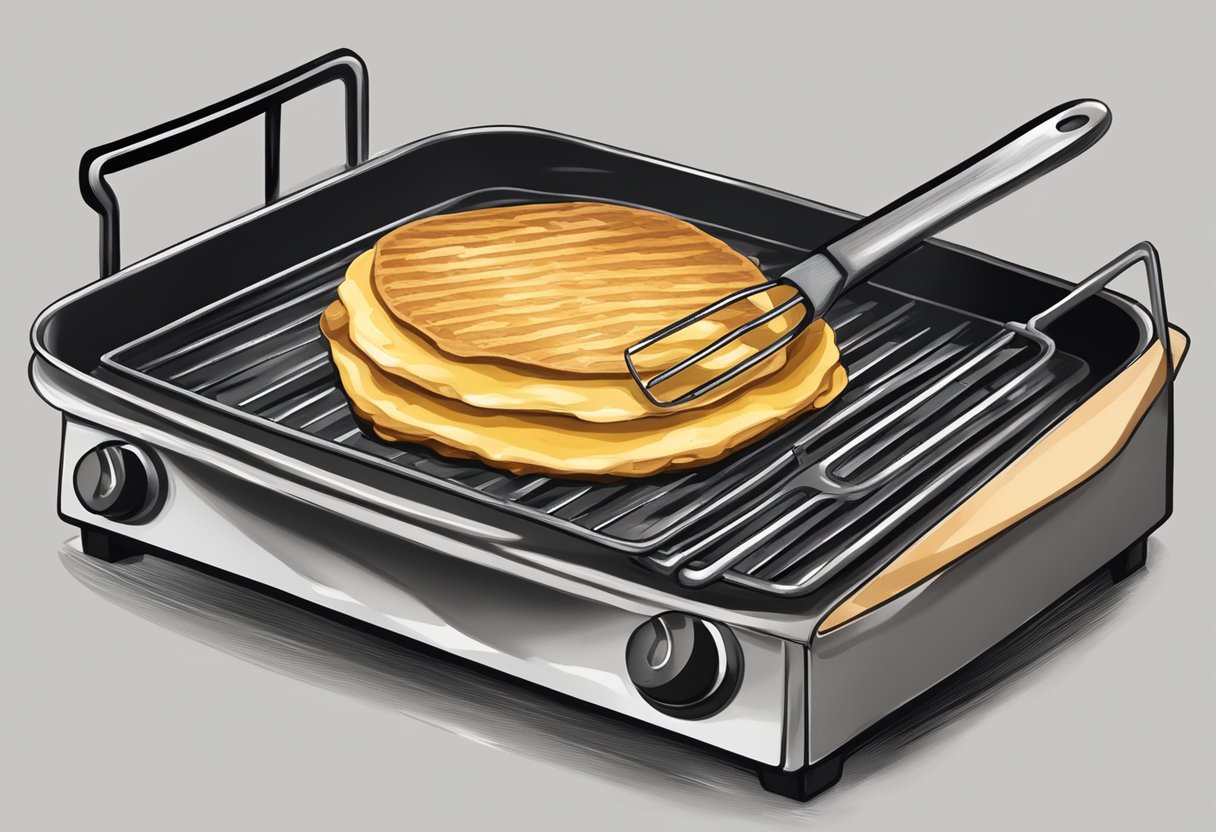
When seasoning a griddle, safety should always be a top priority. Here are some important safety measures to keep in mind:
Handling Hot Griddles
Before seasoning your griddle, make sure it has cooled down completely. Attempting to season a hot griddle can result in serious burns and injuries. Once the griddle has cooled down, use heat-resistant gloves or mitts to handle it.
When applying oil to the griddle, be sure to use a tool with a long handle to avoid getting too close to the hot surface. Additionally, be careful not to spill oil on the hot surface or nearby areas, as it can ignite and cause a fire.
Proper Ventilation
When seasoning a griddle, it is important to have proper ventilation. This will help prevent the buildup of smoke and fumes, which can be harmful to your health.
If you are seasoning your griddle indoors, make sure to open windows and turn on any exhaust fans. Alternatively, you can season your griddle outdoors to avoid any potential health hazards.
By following these safety measures, you can ensure a safe and enjoyable griddle seasoning experience.
Conclusion
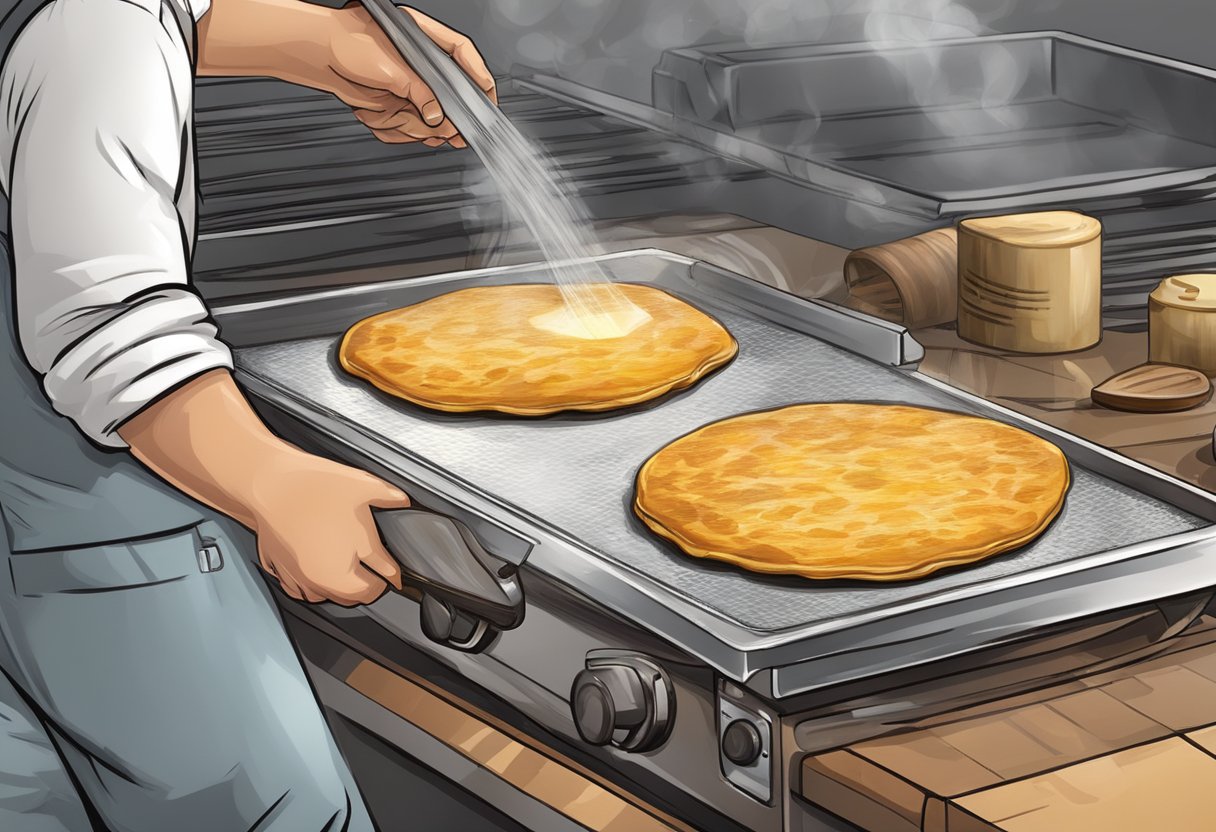
Congratulations! You’ve successfully seasoned your griddle, and now you’re ready to cook up a storm. Remember, seasoning your griddle is an essential step to ensure that your food doesn’t stick and that your griddle stays in excellent condition for years to come.
In this article, we’ve covered the basics of how to season a griddle, including cleaning, preheating, oiling, and heating. We also discussed the benefits of seasoning your griddle, such as preventing rust and creating a non-stick surface.
To recap, here are some key takeaways:
- Always clean your griddle thoroughly before seasoning.
- Preheat your griddle to open up the pores of the surface.
- Apply a thin layer of oil evenly over the entire surface.
- Heat the griddle until the oil starts to smoke and then turn off the heat.
- Repeat the oil application and heating process several times until the surface is dark and shiny.
Remember, a well-seasoned griddle is a happy griddle, and it will reward you with delicious, perfectly cooked food every time. So, get cooking and enjoy your new, non-stick surface!
Frequently Asked Questions
https://www.youtube.com/watch?v=SKg5AujP2cI&embed=true
What is the best oil to season a griddle with?
The best oil to season a griddle with is one that has a high smoke point, such as canola oil, vegetable oil, or flaxseed oil. These oils will not burn easily and will create a non-stick surface on your griddle.
How do you season a griddle before first use?
To season a griddle before first use, you should clean it thoroughly with soap and water, then dry it completely. Apply a thin layer of oil to the surface of the griddle and heat it up until it starts to smoke. Let it cool down, then repeat the process several times until the griddle has a dark, non-stick surface.
How to season a Blackstone griddle?
To season a Blackstone griddle, turn on your griddle and set it to medium-high heat. Allow it to heat for 15-20 minutes or until the entire surface is evenly hot. Choose a high-smoke-point oil, such as flaxseed, canola, or vegetable oil, and apply a thin layer of oil to the surface of the griddle. Let it cook for 15-20 minutes or until the oil has turned dark. Repeat the process several times until the griddle has a dark, non-stick surface.
How often to season Blackstone griddle?
You should season your Blackstone griddle before first use, and then every 3-4 uses or as needed. If you notice that food is starting to stick to the surface of the griddle, it’s time to re-season it.
What is the best product to season a griddle?
The best product to season a griddle is a high-smoke-point oil, such as canola oil, vegetable oil, or flaxseed oil. You can also use a seasoning spray designed specifically for griddles.
Do I have to season my Blackstone griddle every time?
No, you do not have to season your Blackstone griddle every time you use it. However, if you notice that food is starting to stick to the surface of the griddle, it’s time to re-season it.

